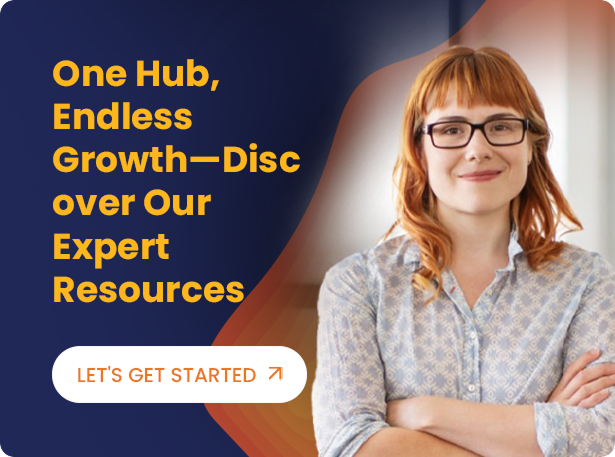The way we sell today is being shaped by the evolving customer journey, technological advancements, and changes in customer behavior. Additionally, sales processes differ from one business to another, and so do the terminology and data management practices associated with them. At MarketStar, we fully comprehend these dynamics and possess the adaptability to align with and enhance our clients' processes through our proven and reliable practices. We bring our expertise to every task, seamlessly integrating our teams into our clients' organizations. However, occasionally we encounter minor inaccuracies that, despite their size, can significantly impact our efforts.
In the realm of sales and marketing, two terms that are often used interchangeably and frequently confused are "leads" and "contacts." While both are vital components of customer relationship management (CRM) strategies, they hold distinct meanings and play different roles in the sales process. In this blog post, we will delve into the disparities between leads and contacts, shed light on their individual significance, and explore the reasons behind the prevalent confusion surrounding these two terms.

Defining Leads and Contacts:
-
Leads: A lead is an individual or organization that has expressed interest in a product or service and possesses the potential to become a customer. Leads are often generated through various marketing efforts, such as website inquiries, social media engagement, or attending events. They typically provide contact information, enabling businesses to initiate communication and nurture the prospect further down the sales funnel. Leads can be classified into different categories based on their level of engagement and likelihood of conversion, such as cold leads, warm leads, and hot leads.
-
Contacts: Contacts, on the other hand, refer to any person or organization whose information is stored in a CRM system. Contacts may include leads, customers, partners, or even employees. They are essentially a collection of individuals and entities with whom a business has established some level of connection, whether through a sales inquiry, transaction, or any other form of interaction. Contacts serve as a database of valuable information that facilitates ongoing communication and relationship management.
Reasons for Confusion:
-
Interchangeable Use: One primary reason behind the confusion between leads and contacts is their interchangeable use in everyday conversations. In casual discussions or non-specific contexts, the terms are often employed without precision, blurring the lines between their distinct meanings. This loose usage contributes to the misconception that leads and contacts are one and the same.
-
Lack of Clear Definitions: In some instances, businesses themselves fail to establish clear definitions and guidelines for leads and contacts, leading to internal confusion and miscommunication. When companies don't have well-defined criteria or systems in place to differentiate between the two, employees may interpret the terms differently, further perpetuating the confusion.
-
Fluid Nature of Lead Conversion: The process of converting a lead into a contact can be fluid and non-linear. As a lead progresses through the sales funnel, their status may change from being a mere prospect to becoming an actual customer. This dynamic transition creates ambiguity and blurs the lines between leads and contacts, as the same individual can be categorized as both simultaneously.
-
Varying CRM Platforms and Practices: Different CRM platforms and practices further contribute to the confusion. Various CRM systems use different terminology, and some even use the terms "leads" and "contacts" interchangeably within their own interfaces. This inconsistency can lead to mixed interpretations, making it challenging to discern the true distinctions between leads and contacts.
Importance of Understanding the Difference:
Understanding the disparity between leads and contacts is crucial for effective sales and marketing strategies. Recognizing the unique attributes of each category helps businesses allocate their resources efficiently, streamline communication efforts, and tailor their engagement to suit the needs of different prospects.
-
Targeted Marketing: Distinguishing between leads and contacts enables businesses to tailor their marketing campaigns appropriately. Leads require nurturing, targeted messaging, and personalized communication to move them closer to conversion. Contacts, on the other hand, demand relationship management, maintaining engagement, and potentially encouraging repeat business.
-
Sales Funnel Optimization: Clear differentiation between leads and contacts aids in optimizing the sales funnel. By identifying where each prospect stands in the buying journey, businesses can focus their efforts on guiding leads through the various stages, while contacts can be prioritized for post-sales support, upselling, or cross-selling opportunities.
While leads and contacts are often used interchangeably, they hold distinct meanings in the realm of sales and marketing. Leads are potential customers who have shown interest, while contacts encompass a broader range of individuals or organizations with whom a business has a connection. Understanding the disparities between these terms is crucial for effective communication, marketing strategies, and sales funnel optimization. By clarifying the differences and establishing clear definitions within organizations, businesses can navigate the complexities of customer relationship management with precision and drive success in their endeavors.
Unlock the potential of your leads and transform them into valuable contacts with MarketStar. Take your sales game to the next level and harness our expertise in converting prospects into loyal customers. Don't miss out on the opportunity to maximize your revenue and build lasting relationships. Get in touch with us today and witness the power of turning leads into valuable contacts.







